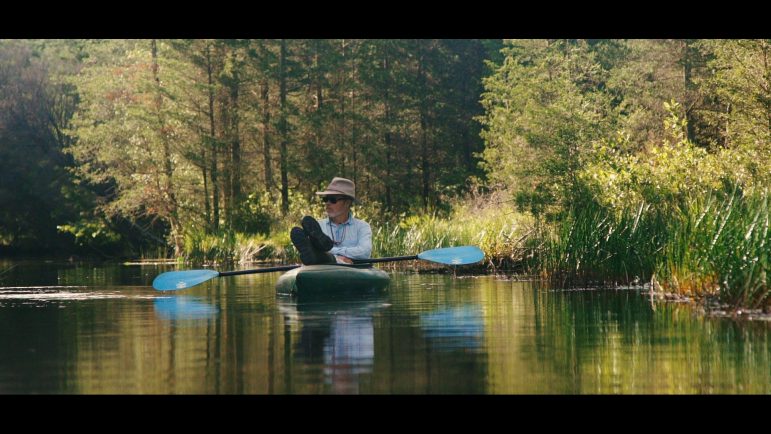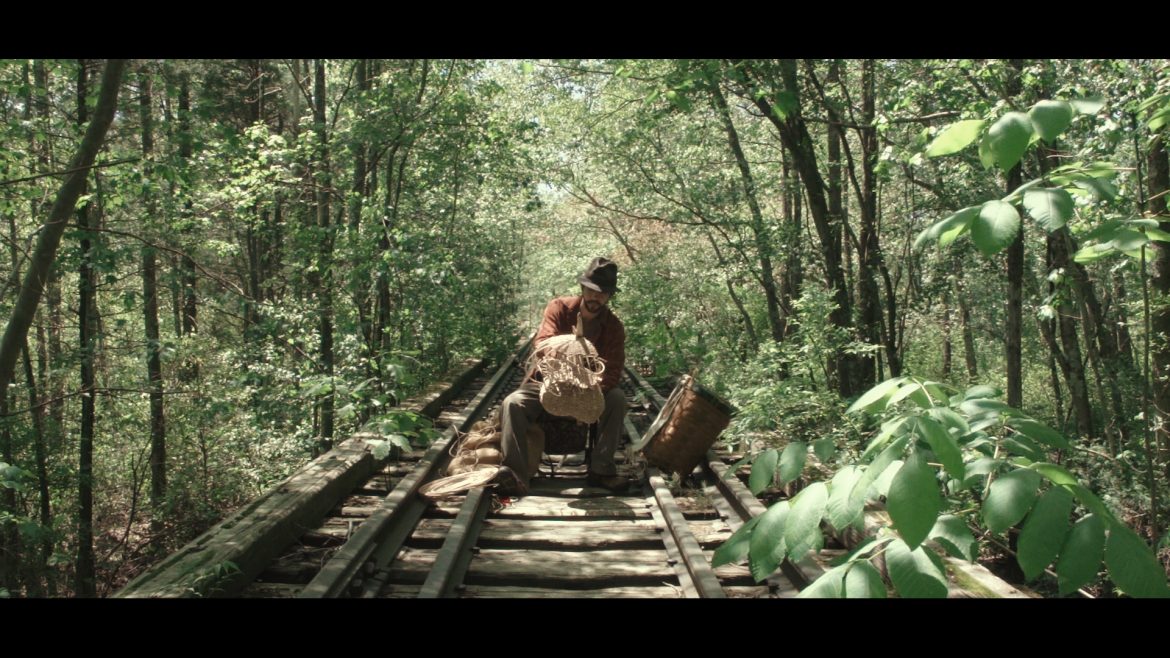There’s a scene in David Scott Kessler’s film about the Pine Barrens where Steven Carty, a basket-weaver from Mount Holly, reflects on the nature of Piney identity. Steven’s a Bozarth, which makes him Piney royalty, and he’s Lenape Indian (“the first Pineys”) on his mother’s side, but he has an open mind on the question of what makes a Piney a Piney—if you say you’re a Piney, you are one. But he does have one pet peeve.
“If you ask me, claiming to be a ‘redneck’ does not make one a Piney,” he says.
“Some folks forget the Mason-Dixon line ends at Delaware.”
Apt words during these interesting times in the history of our Republic, when identity crises have burst forth into our political culture with such unprecedented force.
Kessler’s film is called The Pine Barrens, a name it shares with John McPhee’s celebrated 1968 book, which is credited with launching the Pine Barrens preservation movement. Like McPhee, Kessler’s task was to create something enchanting and atmospheric and also deeply political. When McPhee was writing in the 1960s, the Pine Barrens faced an existential threat from a proposed “supersonic jetport” that was to be plopped down in their midst and that might have turned Chatsworth into Hartsfield-Jackson. Today the threat is regulatory capture. The Pinelands Commission has been slowly degraded as the governor removes independent commissioners and replaces them with tame ones, without political consequence.
McPhee doesn’t hang his book on the drama of a political movement. He bets that his portrait of the forest, its people, their history can be carried along on the back of his prose until he springs the monster in Act III. By then you’ve been smitten.
“I like that the threat was not established as the subject of the book. Rather, what made the Pine Barrens special was the subject,” Kessler said in a Facebook chat.
“That was the reason it was successful and a good example for activists to follow. I have tried to emulate that with my film.”
Kessler has said he intended his film as a “sensory experience” real and “exaggerated.” It ignores the conventions of reality wilderness entertainment. There are no copulating wildebeest or naturalists picking up venomous spiders to demonstrate respect for nature.
There are painterly compositions of Piney landscapes. You hear what a snowfall in the Pines sounds like, what a forest fire in the Pines sounds like. You hear what a summer afternoon in the Pines smells like (baking pine needles) when Allen Crawford, Kessler’s field guide, describes one to you.
McPhee had two main Piney confidants. Kessler’s work is more vividly populated. There’s Paul Evans Pedersen, a longtime South Jersey musician, large and bearded, rooting through the earth for the shards of old glass that he uses to make his beautiful jewelry. There’s Bill Bolger, also white-bearded, maybe taller than Paul, drinking whisky and hanging out with his cats. There’s Mary-Ann Thompson, genius cranberry farmer, lawyer and preservation advocate, sorting cranberries at her farm, Birches. Gary Giberson, the Port Republic Mayor, carves a duck decoy, talks about the privateers in his family tree. There’s Mark Demitroff, talking periglacial morphology around the campfire. There’s Rebecca Hunter taking a swig of whisky and spreading out a sleeping bag beneath the moon.
Kessler’s field guide is Allen Crawford, who graduated from Mainland Regional High School, and is now a graphic designer, among other things, in Mount Holly. He shows us orchids, curly grass ferns, takes us on a walk through a cedar swamp where the roots of the big trees are the only solid ground. Like Kessler, he’s a visual artist, and he describes the changing seasons in the woods with an art historian’s eye. He floats down streams of cedar water in his kayak, dips his boots in the foam. He does a comedy bit with a Pine Barrens tree frog, recites Ozymandias while thinking about the future Ice Age.
To me the most elegiac moments come when we see the Pine Barrens’ current inhabitants talking about the woods former inhabitants, their dead relatives, on the sites they shared together, that hold so much history, memory, sadness, now. The old ways have receded—the community the Pineys kept around harvest time, drinking, singing outside, around the campfire, in the evenings after the day’s work. There are 700,000 people living in the Pine Barrens. They are not uninhabited. But the way of life is as much under threat as anything else we see onscreen. Two of Kessler’s co-conspirators—Mary-Ann Thompson and Karen Riley—have died since he began work on the film. But compared with them, the Pinelands Commissioners seem like pale shadows. They sit beneath grim lighting, looking at their cellphones during meetings. Its hard to imagine them stewarding the land they seem so divorced from.
Kessler launched a crowdfunding campaign Saturday night with a showing of the film at the Princeton Environmental Film Festival. He’s raised $9,538 so far, to help finish the film. You can support the work here.

Dear Mr. Kessler,
I just went through a horrific health experience due to the so called ” protective controlled Pinelands burn”. The fumes and smoke surrounded the outside and interior air of my home and I became quite ill from the chemicals that were used for the burn. At the emergency room there were many other ill town residents with coughing etc, as myself.
I would appreciate any feedback you may have.
Love the beautiful Pinelands, hopefully there will be more environmentally safe means to protect us humans, animals and planet. Fully support your cause.
Sincerely,
Joan Westervelt
7 Highland Drive
Stafford Twp. NJ 08050
609-698-2296